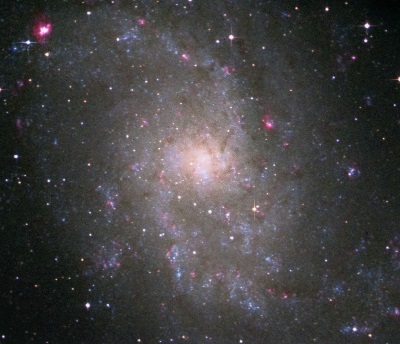Is used as a measure of the brightness of an object that is spread across an area of sky. Such objects include nebulae, galaxies, open clusters and globular clusters. The integrated magnitude is the magnitude the object would have if it was compressed into a single point of light (like a star).
Integrated magnitude can be a misleading value since diffuse objects usually appear fainter in reality than their integrated magnitudes suggest. This is especially valid for objects with large apparent sizes and low surface brightness. For such objects, they can have a reasonably high-integrated magnitude but in reality are more difficult to spot than then would otherwise seem. A good example is M33 "The Triangulum Galaxy". It has an integrated magnitude of +5.7 and therefore within naked eye range but on occasions can be difficult to spot with even large amateur scopes.
